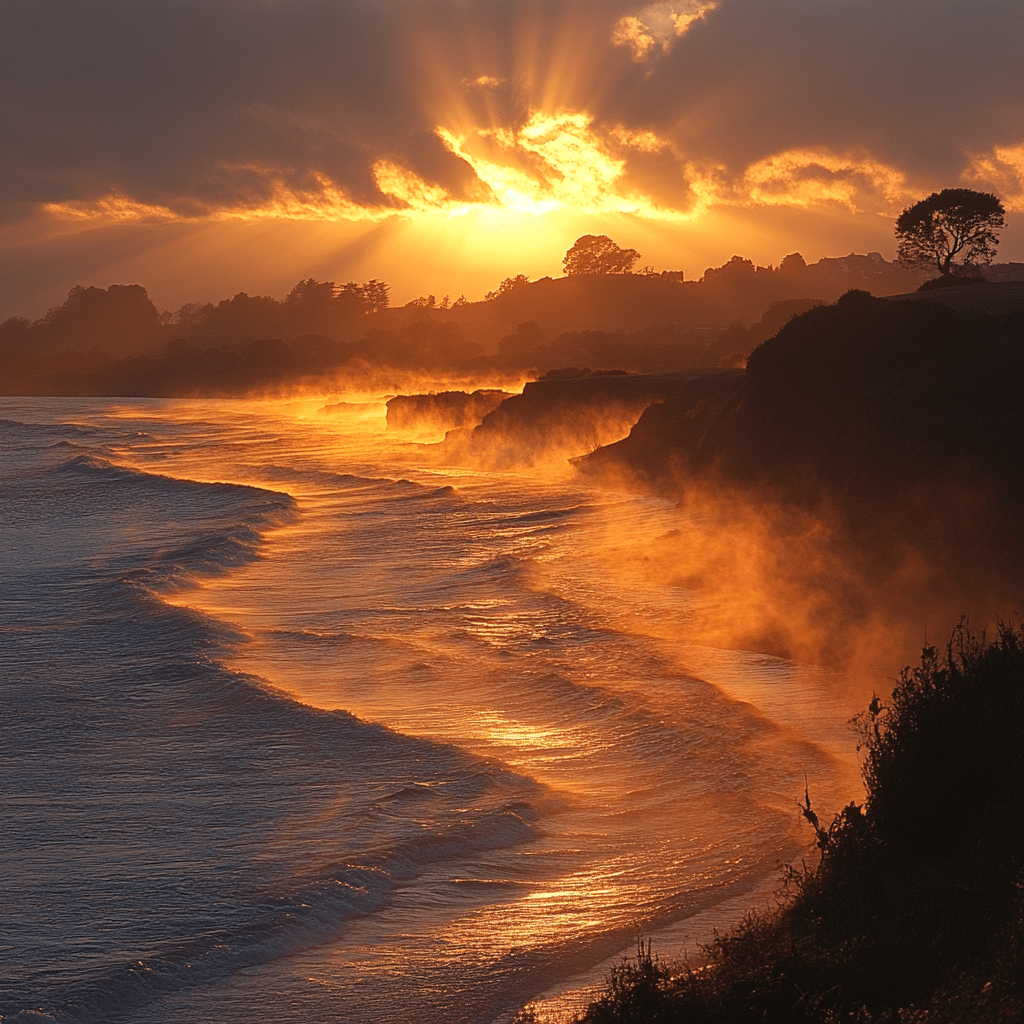**Severe Weather Alert: Atmospheric River Bay Area**
Atmospheric rivers, often called “rivers in the sky,” are narrow corridors of concentrated moisture extending thousands of miles from the tropics. When these atmospheric rivers make landfall, they unleash torrents of rain, leading to extreme precipitation, severe flooding, and landslides. In essence, they’re nature’s plumbing system, channeling moisture across great distances. The Bay Area flooding risk posed by these atmospheric rivers is immense, making it crucial to understand their behavior.
Historical Context: Notable Atmospheric River Events in the Bay Area
The Bay Area isn’t a stranger to the wrath of atmospheric rivers. Over the past decade, several significant events have left indelible marks:
- January 2023: A New Year’s storm ravaged Oakland and Marin County, leading to severe flooding, transportation disruptions, and mass displacements. The economic fallout from this event was substantial.
- November 2018: San Francisco bore the brunt of an intensely powerful atmospheric river, causing widespread structural damage and a spike in insurance claims. Reminiscent of the infamous “Pineapple Express,” this storm left a lasting impact on the city.
By studying these events, we gain valuable insights into the scale of potential damage, enabling better preparation for future occurrences.
Monitoring and Predicting: Tools and Techniques
Modern meteorology has made great strides in forecasting atmospheric rivers. A combination of advanced technology and innovative techniques plays a crucial role in early detection and warning:
These tools collectively offer the Bay Area a robust early warning system, facilitating timely and effective preparations.

| Category | Information |
|---|---|
| Definition | Atmospheric rivers are large, narrow sections of the Earth’s atmosphere that carry moisture from the Earth’s tropics near the equator to the poles. |
| Size | Typically range from 250 to 375 miles in width. |
| Formation | Formed by winds associated with cyclones and move under the influence of other weather. |
| Frequency | On average, Earth has four to five active atmospheric rivers at any time. |
| Impact | Many events are weak, but powerful ones can transport extraordinary amounts of moisture. |
| Influence of El Niño | Warmer sea surface temperatures associated with El Niño provide additional moisture, leading to more intense atmospheric rivers and extreme precipitation. |
| Examples | The “Pineapple Express” is a well-known example where moisture builds up in the tropical Pacific around Hawaii and hits the U.S. and Canada’s West Coasts with heavy rainfall and snow. |
| Relevance to Bay Area | Recent significant media attention due to extreme weather events impacting the area. |
| News Coverage | Watched on NBC Bay Area News, streaming free 24/7. |
| Date References | Various recent events and analyses up until June 2024. |
Potential Impacts: Bay Area Flooding and More
The impact of atmospheric rivers on the Bay Area can be catastrophic:
These consequences underscore the need for robust preparation and resilient infrastructure.
Climate Change and Atmospheric Rivers: A Symbiotic Relationship
Climate change plays a pivotal role in enhancing the intensity and frequency of atmospheric rivers. Warmer global temperatures result in increased atmospheric moisture, contributing to more severe storms:
This understanding is vital for long-term planning and policy development, ensuring adaptive strategies are in place.

Preparedness and Mitigation: Strategies and Solutions
Effective preparedness is the cornerstone of mitigating atmospheric river impacts:
Investing in these initiatives can substantially mitigate adverse impacts and protect the Bay Area’s residents and infrastructure.
Real-World Examples: Comparative Analysis
Drawing parallels with other regions provides valuable lessons:
These comparisons help identify best practices and avoid common pitfalls, offering a roadmap for effective preparedness.
Voices from the Frontline: Experts Weigh In
Experts provide valuable insights into atmospheric river preparedness:
These voices highlight the multifaceted approach required to tackle the challenges posed by atmospheric rivers.
Preparing for the Future: An Integrated Approach
Addressing the challenges posed by atmospheric rivers demands a comprehensive approach:
By fostering collaboration among scientists, policymakers, and community members, we can develop a resilient Bay Area, equipped to handle the tempestuous grip of atmospheric rivers.
For more insights on how communities around the world are adapting, check out Scunthorpe Live. And if you’re interested in learning about unique regional adaptations, the Himba tribe offers a fascinating perspective.
The Bay Area stands at a pivotal junction, facing an era marked by increasingly intense atmospheric rivers. Through informed policy, proactive community engagement, and cutting-edge technology, we can navigate these challenges and safeguard our communities against nature’s daunting forces.
Atmospheric River Bay Area: Intense Storms Ahead
Surprising Facts about Atmospheric Rivers
Did you know that the term “atmospheric river” is a fancy way of describing narrow corridors of concentrated moisture in the atmosphere? These colossal streams can carry more water than the world’s largest rivers combined! It’s mind-bending to think that the rainfall from an atmospheric river bay area event could fill multiple Olympic-sized pools every second. The phenomenon isn’t confined to the Bay Area, either – they occur globally and can wreak serious havoc.
Who Knew the Scale?
The atmospheric rivers hitting the Bay Area can stretch thousands of miles, much like the distance from San Francisco to the other side of the U.S. This staggering length results in prolonged rainfall and sometimes even mortgage help for flood-damaged properties. These storms can impact real estate markets, leading curious homeowners to wonder What are interest rates today. It’s a weather pattern that commands respect due to its sheer scale and ferocity.
A Historical Perspective
Atmospheric rivers have been influencing weather patterns since the days of yore. Remember the Great Flood of 1862? It was caused by a series of atmospheric rivers, transforming parts of California into a temporary inland sea. So, if you’re ever stuck indoors watching the rain pour, just imagine the historical deluge and be glad we’ve got modern infrastructure. Interestingly, even the Durham Council Jobs in the UK are sometimes on alert for effects from these weather events, underlining their far-reaching impact.
Fun Facts with a Splash of Pop Culture
While we’re on the topic of atmospheric rivers, did you know they are sometimes colloquially referred to as “Pineapple Express” when they pull moisture from the tropical Pacific? It’s not just a movie by Gino cosculluela; it’s a real meteorological term! This nickname highlights the fun side of weather lore, blending science with a touch of humor. Next time someone mentions a Pineapple Express, you’ll know it’s more than just a film title—it’s a powerful force of nature bringing much-needed rain and, sometimes, a bit of chaos to the Bay Area.

What is the atmospheric river bay area?
The atmospheric river in the Bay Area is basically a large, moisture-filled air stream that travels from the tropical regions near the equator. It can bring loads of rain and snow, hitting the West Coast hard at times.
Why are so many atmospheric rivers hitting California?
California’s getting hit by so many atmospheric rivers mainly due to El Niño, which warms up the sea surface and pumps extra moisture into the air. This leads to stronger and more frequent atmospheric rivers and heavy precipitation.
How rare is an atmospheric river?
Atmospheric rivers aren’t super rare; the Earth usually has about four to five going on at any time. However, it’s the strong and intense ones that catch the headlines and create big impacts.
Is an atmospheric river the same as Pineapple Express?
An atmospheric river isn’t exactly the same thing as the Pineapple Express, but the Pineapple Express is a type of atmospheric river that brings moisture from the tropical Pacific near Hawaii to the West Coast, causing heavy rain and snow.
How long will an atmospheric river last?
How long an atmospheric river lasts can vary. They usually hang around for a few days, but some might stick around longer, dumping lots of moisture over a region.
What is the atmospheric river threat?
The threat from an atmospheric river comes from the heavy rain and snow they can bring. This can lead to flooding, landslides, and significant water-related damage in the affected areas.
What are the hazards of atmospheric rivers?
The main hazards from atmospheric rivers include serious flooding, landslides, and heavy snowfall. They can cause substantial damage to infrastructure and result in dangerous travel conditions.
What will happen once the atmospheric river moves through California?
Once an atmospheric river moves through California, it’s often followed by clearer skies. However, the aftermath can include flooding, landslides, and residues of heavy rainfall and snowfall.
Will atmospheric river solve drought?
While atmospheric rivers bring much-needed water, they don’t necessarily solve drought issues. They can help alleviate drought conditions temporarily, but long-term drought solutions require more consistent and manageable water sources.
What is a category 5 atmospheric river?
A category 5 atmospheric river is the most intense kind, able to transport massive amounts of moisture and potentially cause extreme rainfall and flooding. It’s a rare but very powerful event.
Is an atmospheric river just a storm?
An atmospheric river isn’t just a storm; it’s a specific flow of moisture in the atmosphere. While it can cause stormy weather with lots of rain and snow, it’s more about the moisture transport rather than being a standalone storm system.
Is atmospheric river the same as La Nina?
An atmospheric river and La Niña aren’t the same. La Niña is a climate pattern that affects sea surface temperatures and weather patterns over longer periods, while atmospheric rivers are narrow bands of moisture that move through the atmosphere.
What is the nickname given to an atmospheric river?
The nickname given to an atmospheric river is “the Pineapple Express,” especially when it brings moisture from the tropical Pacific near Hawaii to the west coasts of the U.S. and Canada.
What is the most well-known atmospheric river?
The most well-known atmospheric river is the Pineapple Express. It’s famous for transporting moisture from the Pacific Ocean near Hawaii to the coasts of the U.S. and Canada, often resulting in heavy rainfall and significant weather events.
When did atmospheric rivers become a thing?
The concept of atmospheric rivers has been around for a while, but they’ve gained a lot more attention in recent years due to their increasing impact on weather patterns and the ability to study them better with modern technology.
What is meant by atmospheric river?
An atmospheric river refers to a long, narrow region in the atmosphere that transports vast amounts of moisture from the tropics to other parts of the world. These ribbons of vapor can lead to heavy precipitation and significant weather events.
Is an atmospheric river the same as a hurricane?
An atmospheric river isn’t the same as a hurricane. Hurricanes are intense tropical storms with strong winds and circular rotations, while atmospheric rivers are more about bands of moisture moving through the atmosphere causing heavy rain and snow.
What is an atmospheric river USA today?
For USA Today, an atmospheric river is a crucial weather phenomenon that brings significant amounts of moisture from tropical regions, often leading to heavy rain, snow, and potential flooding in the affected areas.
When was the last time California had an atmospheric river?
California last experienced an atmospheric river relatively recently, given how frequently they occur. With ongoing climate patterns like El Niño, these events aren’t too far apart, hitting the state with heavy precipitation fairly often.



